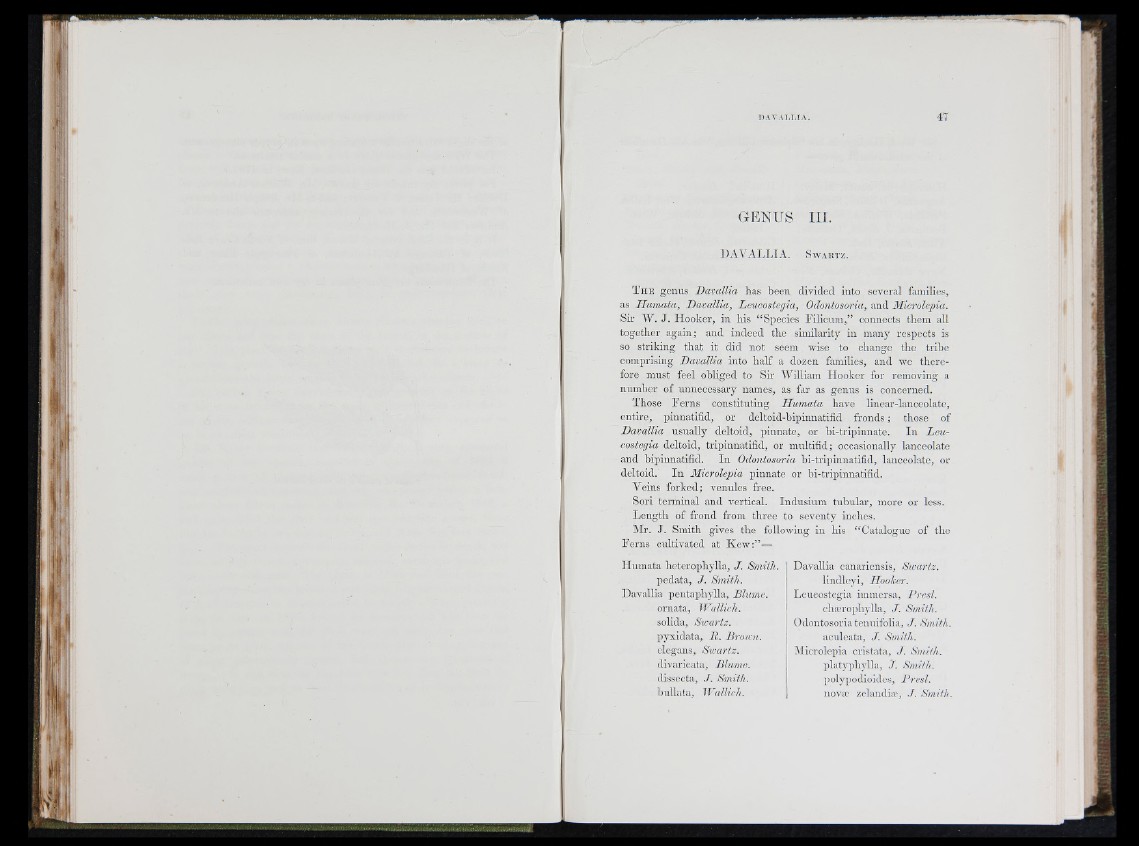
G E N U y I I ] ,
D A A 'A L L I A . S w a r t z .
T h e gcnus DacalUa has been divided into several families,
as H um a ta , Davallia, Leucostegia, Odontosoria, and Microlepia.
Sir AV. J . H o o k e r, in his “ Species F ilicum ,” connects them all
together again; and in d e ed th e similarity in many respects is
so strik in g th a t it did not seem wise to change th e trib e
comprising Davallia into h a lf a dozen families, and we th e re fore
must feel obliged to Sir AA^illiam H o o k e r for removing a
n umber of unnecessary names, as far as genus is concerned.
Those F e rn s constituting H um a ta have linear-lanceolate,
en tire , pinnatifid, or deltoid-bipinnatifid fronds ; those of
Davallia usu a lly deltoid, p in n a te , or b i-tripinnato. In L e u costegia
deltoid, tripinnatifid, or mu ltifid; occasionally lanceolate
and bipinnatifid. I n Odontosoria b i-tripinnatifid, lanceolate, or
deltoid. I n Microlepia pin n a te or bi-tripinnatifid.
Veins fo rk ed ; venules free.
Sori te rmina l and vertical. In d u sium tu b u la r, more or less.
L e n g th of fro n d from th re e to seventy inches.
Mr. J. Smith gives th e following in his “ Catalogue of th e
F e rn s cultivated at K ew :”—
H um a ta hetero p h y lla , J. Smith.
pedata, J. Smith.
Davallia p entapbylla, B lum e.
ornata, iVallich.
solida, Stearfz.
p y x id a ta , B . B ro in t.
elegans, Swartz.
divaricata, Blume.
dissecta, J . Smith.
b u lla ta , ]\~allirh.
Davallia canariensis, Swartz.
lindlcyi, Hooker.
Ijcueostcgia immersa, Presi.
chierophylla, J . Smith.
Odontosoria tenuifolia, J. Smith.
aculcata, J. Smith.
Alicrolcpia cristata, J . Smith.
p la ty p h y lla , J . Smith.
polypodioides, J ’resl.
nova- zchmdia', J. Smith.